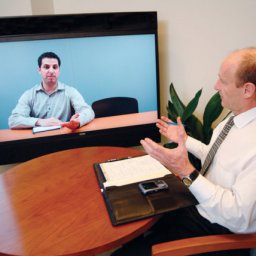Original Post by Dennis Collins
Looking to Transform Your Business? Start by Stoking Your Curiosity
No matter the size, shape or focus of your company, odds are you’ve heard the term “Digital Transformation.” That’s because, for the last few years, just about every major business magazine and consulting group has been buzzing about the issue.
So, let’s launch this post by picking a definition. How about taking our cue from the esteemed MITSloan Management Review? Their analysts provide a concise, straightforward description of the phenomenon as the “use of technology to radically improve performance or reach of the enterprise.” Cast in those terms, Digital Transformation makes a fitting topic for our blog, as we explore tools and techniques for using communications technology to transform the way you and your co-workers collaborate.
In short, our blog is all about sharing new ways and ideas that help you work better with your team. No doubt the days ahead will involve you in what leadership pundits call “transformative conversations” – i.e., a mix of meetings to discuss new and better ways to do business.
How do you prepare yourself for transformative discussions? Stoking your curiosity is a great way to start. Why? Carly Stec gives a succinct summation in a recent post for the HubSpot blog:
“In today’s fast-paced, innovation-heavy world, what we know today might not be valuable to us in a few weeks, months, or years. And if we want to remain agile, we need to continue to seek out and explore new information, new mediums, and new opportunities.”
While curiosity may feel like an innate, intangible trait, in a business setting it’s a tangible skill that can be cultivated, expanded and honed to a purpose – such as improving the way we collaborate. In her article, Stec offers tips for becoming a “more curious person.” Here’s our take on three of Stec’s pointers that we feel will enhance your performance in meetings most:
1. Flip Your Perspective
When planning projects, considering policies and/or analyzing performance with colleagues, make a deliberate effort to adopt a point of view from outside your team, your organization or even your industry. How might a different department approach your project? How might a different division see your proposed policy changes? And how might a similar company in a different industry regard your results? Not only is shifting perspective a means of injecting greater creativity, the method contributes to managing risks by identifying blind spots.
 2. Stow the Past
2. Stow the Past
Speaking of blind spots… the oft-heard admonition to “let go of the past” could lead you to throw away potentially valuable data. Instead of a simplified directive to leave your past behind you, perhaps applying a storage analogy is a better tactic for business.
Despite advances in digital storage capacity, the age of Big Data compels us to have a strategy for determining what types of information we keep and how much of it we accumulate. And because our working experiences tend to pile up in the form of data, we’re encouraged to revisit and sort them from time to time by our IT support. So, not only does taking a storage mindset facilitate deliberation about what experiences we carry with us, it also helps us prevent history from falling fully out of sight and out of mind.
3. Embrace the Unfamiliar
Stec cites research by George Loewenstein, a professor of economics and psychology at Carnegie Mellon University, that demonstrates that the “more we know, the more we want to know.” But sometimes our desire for efficiency supersedes this thirst for new information and we narrow focus to the point of blocking out other perspectives. And as we covered in bullet one of this list, narrowing perspective can lead to blind spots, which can drain our effectiveness. So, we need to embrace our natural urge to learn more about unfamiliar topics. Not only will the practice broaden our perspectives, but it helps mitigate risk, too.
It’s this balance between efficiency and effectiveness described in point three that generates high productivity. We’ll share another secret to facilitating transformative conversations in an upcoming post.
Learn More About Some Of Our Great Conferencing Solutions



